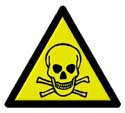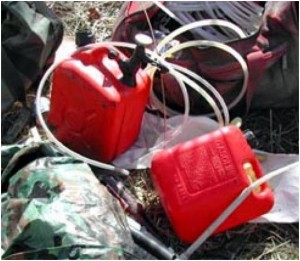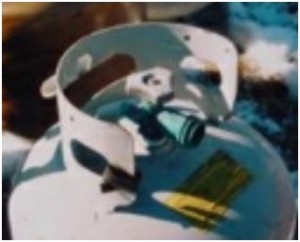Here is a list of how to spot a meth lab. There are signs of meth manufacturing inside and outside of a house:
- Strong smell of urine, or unusual chemical odors such as ammonia or acetone.
- Windows blacked-out, traffic at odd hours, people going outside to smoke.
- Signs of chemical burns and spills, dark red phosphorous stains in the sinks, toilets or bathtubs, or red staining on the interior walls, counter-tops and flooring.
- Visible areas in the yard where chemicals have been dumped, or burn pits with chemical container remains, dead or dying vegetation.
- Packaging or containers from large quantities of cold medicines.
- Jars containing clear liquid with a white or red-colored solid on the bottom, jars with shiny metallic purple crystals inside, bottles or jars with rubber tubing attached.
- Glass cookware or frying pans containing a powdery residue.
- Coffee filters unused and used with red stains, white paste or small amounts of shiny white crystals in them.
- Soft silver or gray metallic ribbon (in chunk form) stored in oil or Kerosene.
- Propane tanks with fittings that have turned blue or green.
- Excessive trash with large amounts of the following: alcohol, benzene, toluene/paint thinner, Freon, acetone, chloroform, camp stove fuel, starter fluid, anti-freeze, anhydrous ammonia, Heet, white gasoline, phenyl-2-propane, phenyl acetone, phenyl propanolamine, iodine crystals, red phosphorous, black iodine, lye, Drano, muriatic or hydrochloric acid, battery acid or sulphuric acid, Epsom salts, batteries/lithium, sodium metal, wooden matches, propane cylinders, hot plates, ephedrine, pseudo-ephedrine, cold tablets, bronchodilators, energy boosters, rock salt, diet aids.
|








